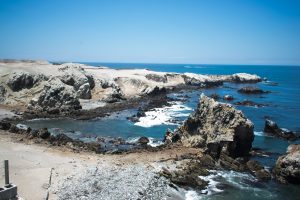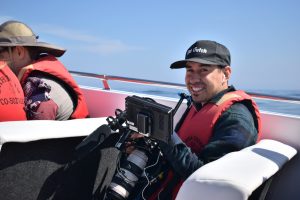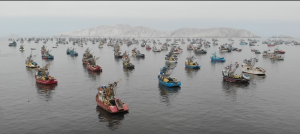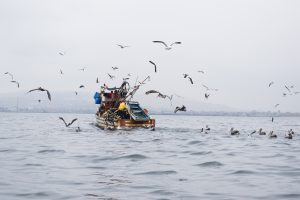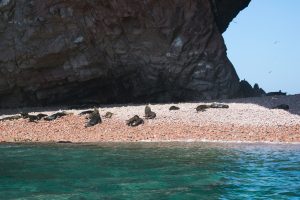The oceans are a source of wonder. They cover two-thirds of our planet, provide millions of tons of seafood each year, are an important part of our economy, and are the foundation of many coastal cultures and identities.
World Oceans Day is a celebration of our close connection with the oceans. However, the news about the ocean can seem bleak: fisheries collapses, melting sea ice, starving orcas and seabirds with plastic-filled bellies. Here are ten things that you can do to help the oceans, whether you live on the coast or thousands of miles away.
1. Be a conscious consumer of seafood
Canada is one of the world’s largest seafood suppliers, exporting over two-thirds of our production. However, local seafood demand is satisfied largely by imports, which tend to be less sustainable than what we export. Reducing the negative impacts of our diets on the oceans can be easy: buy locally-caught seafood, when possible, and choose seafood that has an Ocean Wise or Marine Stewardship Council label. SeaChoice even has a guide to retailers that support sustainable seafood.
2. Support local livelihoods
Coastal communities, Indigenous peoples, and small-scale fishers rely on the ocean for their livelihoods. It takes a lot of hard work to catch and process the seafood available in your local market. One way to ensure local fishers have just access to resources, are paid fairly, and follow sustainable practices is to join a community-supported fishery (CSF). Members of CSFs, like B.C.’s Skipper Otto’s, support fishing families and get affordable, fresh, local, high-quality, and sustainable seafood. Local Catch can identify the CSFs closest to you.
3. Support sustainable marine industries
Aquaculture is an important marine industry, providing over half the seafood consumed globally. Sustainable aquaculture improves food security, provides employment in rural and coastal communities, and takes fishing pressure off wild seafood stocks. Aquaculture and fisheries now contribute equally to B.C.’s GDP with revenue from aquaculture more than doubling since 2000. Support farmed seafood that minimizes environmental and social impacts by purchasing products with the Aquaculture Stewardship Council logo.
4. Be a responsible ocean user
B.C. is home to almost a quarter of all boating organizations in Canada, including tourism, recreational anglers, and whale watching companies. Unfortunately, the growing use of coastal marine areas is accompanied by increased pollution and noise that threatens marine life. Three important ways to diminish your impact when boating in coastal areas are to anchor deeper than seven meters to protect habitat, learn and follow the best practices in rockfish conservation areas, and choose only certified whale watching companies.
5. Support Indigenous communities
Indigenous stewardship of their traditional territories produces the healthiest ecosystems, according to a recent UN report. Supporting the rights of B.C.’s First Nations can help create and preserve healthy environments. Coastal First Nations is an alliance of nine B.C. First Nations working together to protect B.C. coasts while building their economies. Learn about them, the important work they are doing on coastal issues — such as passing Bill C-48, the Oil Tanker Moratorium Act — and add your voice in support.
6. Reduce your single use plastics consumption
Ocean plastics have widespread negative effects on marine life. Most plastic pollution reaches the ocean after waste disposal, due to poor waste management and limited recycling options. If you avoid items with plastic packaging – try Vancouver’s no-packaging grocer Nada – and avoid food in disposable takeout containers (bring your own instead!), you can reduce plastic flow into the ocean. When plastic is the only option, choose plastics numbered 1, 2, and 5, instead of 3 and 6, to make sure it is more likely to be recycled and stay on land.
7. Protect our shorelines
Shorelines host some of the most productive and treasured ecosystems in the world. They are also where humans love to live, play, and work: approximately 80% of B.C.’s population lives along the coast. Three top threats to shorelines are coastal development, pollution, and climate change. You can help protect shorelines by adopting Green Shores principles for new developments, restoring coastal vegetation to minimize erosion, and organizing or participating in a shoreline clean-up through the Great Canadian Shoreline Clean-up.
8. Reduce your carbon footprint
Climate change is arguably the biggest threat facing the oceans. Shifting to a lower-carbon lifestyle can be good for your wallet, your health and the oceans. Take advantage of Vancouver’s bike paths and public transit, or carpool if you must commute by car. Spend your vacation at one of B.C.’s parks or beaches instead of flying out of town. Follow Canada’s new food guide, which recommends a diet of whole grains, fruits, vegetables, and plant-based proteins that is good for the body, and is also good for the planet.
9. Be politically active
While there are many actions individuals can take to protect ocean health, the challenges facing the oceans also require coordinated solutions at the government level. From the protection of endangered whales to plastic waste policy, our voices can make a big difference. Writing to elected officials, attending public meetings, contributing to public consultations, supporting ocean advocacy groups and voting are all great ways to help shape the future of our oceans.
10. Care
This list provides just a few of many actions you can take to engage directly with ocean conservation, but at the end of the day the most important way to protect the ocean is to care. Find out why a healthy ocean matters to you, your family, and your community. Identify and commit to an action or set of actions that contribute to protecting ocean health. Then share those actions with the people who are close to you.
This post was a collaboration by Ocean Leaders Fellows Fiona Beaty, Cameron Bullen, Sara Cannon, Fanny Couture, Kaleigh Davis, Rocio Lopez de la Lama, Santiago de la Puente, and Heather Summers.

